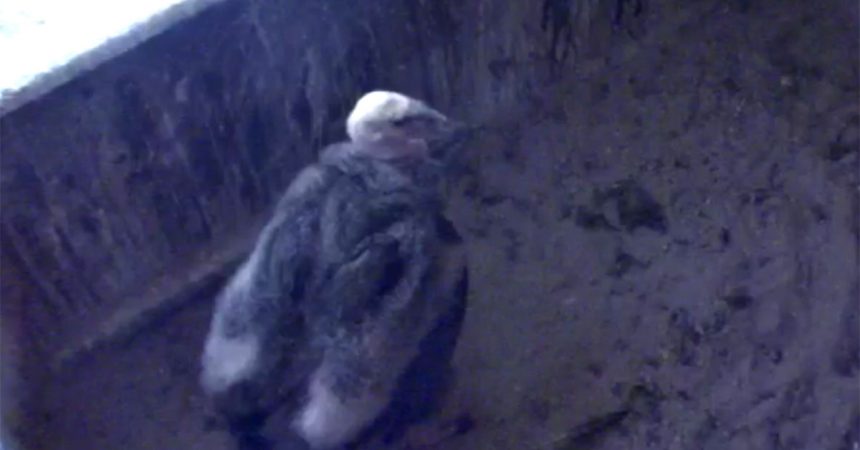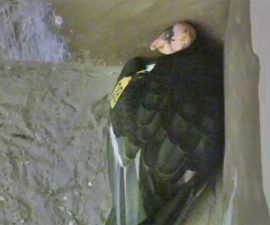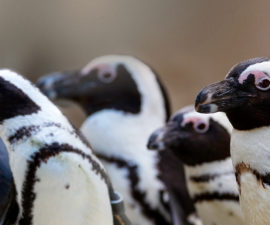The results are in: Saqutinan (pronounced “sah-koo-TEE-nahn”), our California condor chick being raised on CondorCam at the San Diego Zoo Safari Park is a male!
He is now over 100 days old and is starting to get his big bird feathers! As many of our regular viewers have noticed, his flight feathers are growing in. Some of the first feathers that start to grow are the wing feathers. It is easy to see the feathers growing through the chick’s down – the down feathers are gray, but the new flight feathers are black. The long feathers that grow from the tip of the wing are called “primary feathers” and the feathers from the wrist to the armpit are “secondary feathers.” Primary and secondary feathers are the giant feathers that make the California condor’s wing so large and impressive. An adult can have a wingspan of up to 9 ½ feet! We are estimating our chick’s wingspan to be around five feet right now—between the size of a red-tailed hawk and a bald eagle. His tail feathers are also starting to grow. They’re a little harder to see on camera, but you should be able to spot them soon.
After the wing and tail feathers fill in, the feathers on the chick’s back will start to grow, as well as the small feathers on the top of the wing (called “coverts”). Even though many new, black feathers will be covering parts of his body, he will still have lots of gray down showing, making it easy to differentiate him from his parents. Eventually, his light-colored skin will turn dark grey or black and be covered with fine, fuzzy feathers, but this won’t happen until well after he leaves the nest. His skin will stay dark until he reaches maturity at six years and it turns pink-orange, just like his parents’, Sisquoc and Shatash.
Saqutinan had his second health exam on June 20 during which our veterinary staff were able to administer his second, and final, West Nile virus inoculation. A blood sample was obtained and he weighed in at 6.25 kg, over half of his projected adult weight. Even though our little guy is getting big, he still has room to grow!
The adult condors normally are fed four days per week. The other three days of the week, they are fasted. These birds often will not eat every day in the wild, sometimes fasting for up to two weeks, so our nutritionists recommend not feeding them every day to prevent obesity and food waste. Their diet, depending on the day, can consist of rats, rabbits, trout, beef spleen, or ground meat. We offer 2 to 3 pounds of food per bird per feeding day. When the condors are raising a chick, in addition to their normal diet, we offer extra food every day: 1 rat, 1.5 pounds of beef spleen, 1 trout, and half a pound of ground meat. They don’t end up feeding all of this food to the chick, but we want to be sure that they have enough for the growing baby. It’s difficult to calculate exactly how much food the chick is eating each day, but we estimate that he could be eating 1.5 to 2.5 pounds of food per day.
Saqutinan may soon start to jump up onto the nest box barrier to get a better view of the outside world. Stay tuned for our next blog that will discuss this next big milestone!
Ron Webb is a senior keeper at the San Diego Zoo Safari Park. Read his previous blog, The First Health Exam for Saqutinan.





